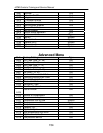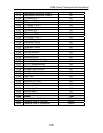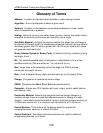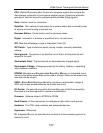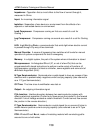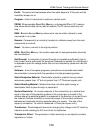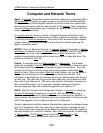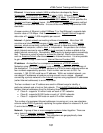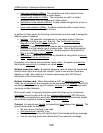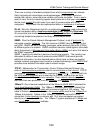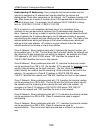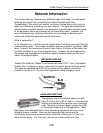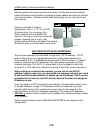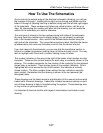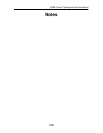
iCOM
Control Training and Service Manual
How To Use The Schematics
As you look at the outside edge of the electrical schematic (drawing), you will see
the numbers 8 through 1 (reading left to right) across the top and bottom and the
letters D through A (reading from top to bottom) along both the left and right edges
of the schematic. These numbers and letters are called locators, just like on a
map. By intersecting the number and letter into the drawing, you can locate the
section of the schematic you need to reference.
The next area of interest is the line numbers along both sides of the schematic.
By using these line numbers and a straight edge, you can pinpoint a particular
item in the located section. Also, useful is the Nomenclature section along the
right side of the schematic. The nomenclature sections refers identifies the device
by abbreviation and name and indicates on which line the device is found.
If you look deep into the schematic, you can see that the transformer section is
laid out in a ladder progression making it easy to follow-out each circuit. You may
wish to highlight each circuit with a marker making it easy to follow.
The number indicators in the area to the right of the ladder circuit section are also
important. These are the contact locators for each relay or contactor shown on the
drawing. The number represents the line location of the contact(s) for the adjacent
shown relay or contactor. There are two types of line number indicators. One is
highlighted with a bar across the top of the number, this indicates a normally
closed contact. The other number shown without the bar indicates a normally
open contact. Remember that the drawing is shown in the non-powered (de-
energized) state.
These drawings are the latest revisions at publication of this manual and are what
Liebert calls Universal drawings. Liebert has included numerous options on each
one of these drawing to help in troubleshooting the system. These drawings may
or may not be on your particular unit.
It is important to become familiar with legend, nomenclature and notes on each
drawing.
167



